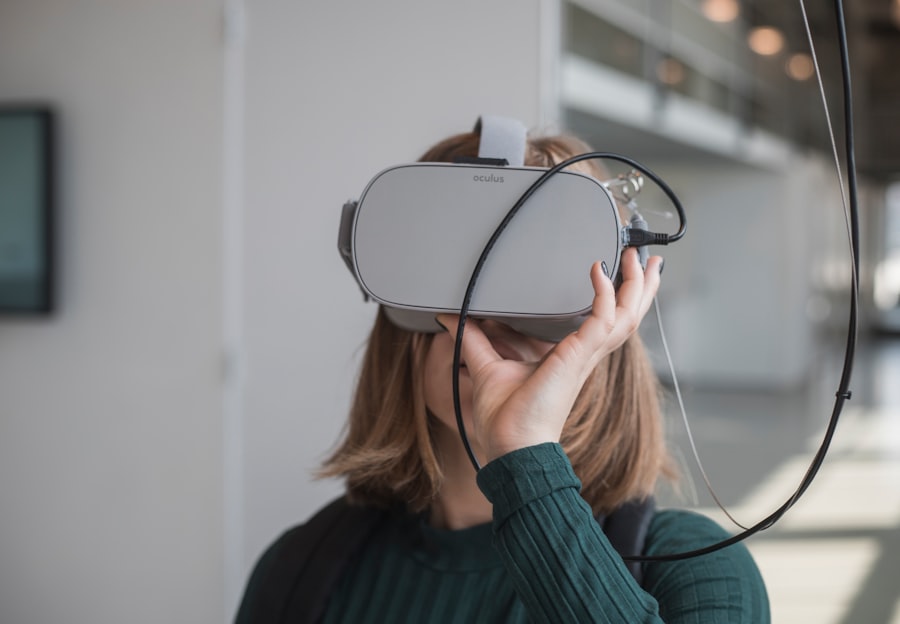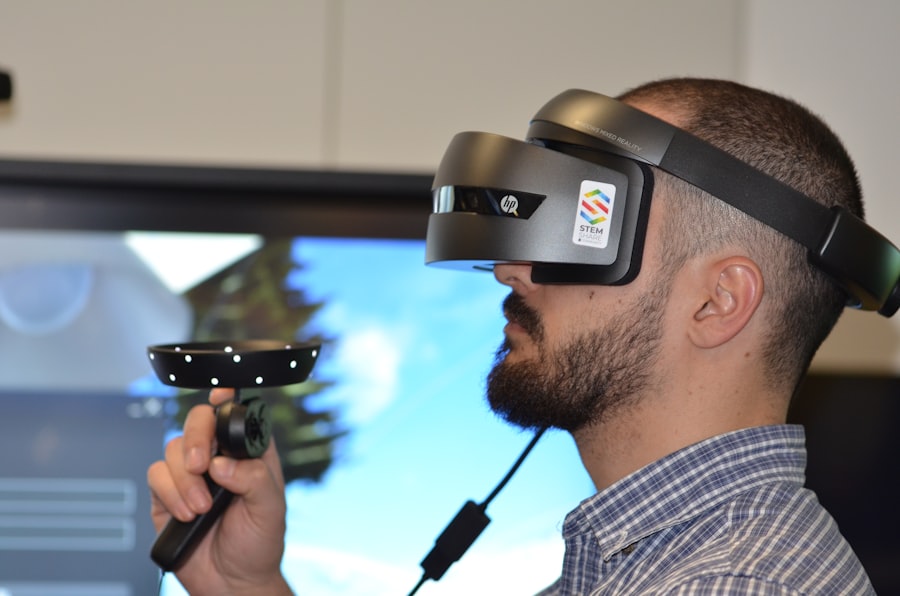Download links
How to install Embracing Virtual Life: Exploring New Realities APK?
1. Tap the downloaded Embracing Virtual Life: Exploring New Realities APK file.
2. Touch install.
3. Follow the steps on the screen.
Description
The advent of virtual reality (VR) has marked a significant turning point in the landscape of technology, ushering in an era where digital experiences can mimic or even surpass real-world interactions. Initially, VR was confined to the realms of gaming and entertainment, captivating audiences with immersive experiences that transported users to fantastical worlds. However, as technology has advanced, the applications of VR have expanded dramatically, permeating various sectors such as education, healthcare, and real estate.
The development of more sophisticated hardware and software has made VR more accessible and user-friendly, allowing a broader audience to engage with this innovative medium. One of the most notable advancements in VR technology is the improvement in graphical fidelity and motion tracking. Early VR systems often suffered from latency issues and low-resolution graphics, which could lead to discomfort and disorientation for users.
Today’s VR headsets, such as the Oculus Quest 2 and Valve Index, offer high-resolution displays and advanced tracking capabilities that create a seamless experience. This evolution has not only enhanced gaming but has also opened doors for simulations in training environments, where users can practice skills in a risk-free setting. For instance, medical students can perform virtual surgeries, while pilots can navigate complex flight scenarios without leaving the ground.
As VR continues to evolve, it is poised to redefine how we interact with technology and each other.
Key Takeaways
- Virtual reality is a new frontier in technology, offering immersive experiences and endless possibilities for innovation.
- Embracing virtual life requires adapting to new ways of navigating the virtual world and utilizing tips and tricks for a seamless experience.
- Virtual reality has a significant impact on social interactions and relationships, changing the way people connect and communicate with each other.
- Exploring the psychological effects of virtual reality on mental health is crucial for understanding its potential benefits and risks.
- The workplace is adapting to a new era of remote work with the integration of virtual reality, offering new opportunities for collaboration and productivity.
- The future of virtual reality holds endless innovations and possibilities for the next generation, shaping the way we interact with technology and the world around us.
Navigating the Virtual World: Tips for Embracing Virtual Life
As individuals begin to explore the vast expanse of virtual reality, it is essential to approach this new frontier with a sense of curiosity and caution. One of the first steps in embracing virtual life is to familiarize oneself with the various platforms and applications available. From social VR spaces like VRChat to immersive educational tools like Engage, each platform offers unique experiences tailored to different interests.
Users should take the time to explore these environments, understanding their functionalities and communities. Engaging with tutorials or community forums can also provide valuable insights into best practices and tips for maximizing enjoyment and safety in virtual spaces. Another critical aspect of navigating the virtual world is understanding the importance of personal boundaries and digital etiquette.
Just as in real life, interactions in virtual environments can vary widely in tone and intent. Users should be mindful of their behavior and communication styles, ensuring they respect others’ boundaries while fostering positive interactions. Establishing clear guidelines for oneself—such as taking breaks to avoid fatigue or setting limits on social interactions—can enhance the overall experience.
Additionally, being aware of privacy settings and data security measures is crucial in protecting one’s personal information while engaging in these immersive environments.
The Impact of Virtual Reality on Social Interactions and Relationships

Virtual reality has fundamentally altered the way individuals connect and interact with one another. In traditional social settings, physical presence plays a significant role in communication; however, VR transcends geographical barriers, allowing people from different parts of the world to meet in shared virtual spaces. This capability has led to the emergence of new forms of social interaction that can be both enriching and challenging.
For instance, friendships formed in virtual environments can be just as meaningful as those developed face-to-face, as users share experiences and collaborate on activities within these immersive worlds. However, the shift towards virtual socialization also raises questions about the quality of relationships formed in these spaces. While VR can facilitate connections that might not occur otherwise, it may also lead to superficial interactions devoid of the depth found in physical relationships.
The anonymity afforded by avatars can embolden individuals to express themselves more freely but may also result in negative behaviors such as trolling or harassment. As users navigate these complex dynamics, it becomes essential to cultivate emotional intelligence and empathy within virtual interactions, ensuring that relationships are built on mutual respect and understanding.
Virtual Reality and Mental Health: Exploring the Psychological Effects
| Study Title | Participants | Duration | Findings |
|---|---|---|---|
| Virtual Reality Exposure Therapy for PTSD | Veterans with PTSD | 8 weeks | Reduced PTSD symptoms and improved quality of life |
| Virtual Reality Meditation for Anxiety | Adults with anxiety | 4 weeks | Decreased anxiety levels and improved mindfulness |
| Virtual Reality Relaxation for Stress | College students | 2 weeks | Reduced stress and improved mood |
The intersection of virtual reality and mental health is an area of growing interest among researchers and practitioners alike. VR has shown promise as a therapeutic tool for various mental health conditions, including anxiety disorders, PTSD, and phobias. By immersing patients in controlled virtual environments, therapists can help individuals confront their fears or practice coping strategies in a safe space.
For example, exposure therapy for individuals with a fear of heights can be conducted through VR simulations that gradually increase exposure to heights without any real-world risk. Despite its potential benefits, there are also concerns regarding the psychological effects of prolonged VR use. Some users may experience symptoms akin to motion sickness or disorientation after extended sessions, commonly referred to as “VR sickness.” Additionally, excessive immersion in virtual environments may lead to escapism, where individuals prefer their virtual lives over real-world interactions.
This phenomenon raises important questions about balance; while VR can provide an escape from reality, it is crucial for users to remain grounded in their physical lives to maintain overall well-being.
Virtual Reality in the Workplace: Adapting to a New Era of Remote Work
The COVID-19 pandemic accelerated the adoption of remote work practices across various industries, prompting organizations to seek innovative solutions for collaboration and communication.
Platforms like Spatial and Rumii allow teams to collaborate on projects within virtual spaces, fostering creativity and engagement that traditional video conferencing tools may lack.
For instance, organizations can utilize VR simulations to train employees on complex machinery or customer service scenarios without the risks associated with real-world training. This approach not only enhances skill acquisition but also promotes team bonding through shared experiences in virtual environments.
As businesses continue to adapt to remote work trends, integrating VR into their operations may become a standard practice that enhances productivity and employee satisfaction.
The Future of Virtual Reality: Innovations and Possibilities for the Next Generation

Looking ahead, the future of virtual reality holds immense potential for innovation across various domains. As technology continues to advance, we can expect improvements in hardware capabilities such as lighter headsets with longer battery life and enhanced field-of-view experiences. Additionally, developments in haptic feedback technology will allow users to engage more fully with virtual environments by simulating touch sensations, further blurring the lines between reality and virtuality.
Moreover, the integration of artificial intelligence (AI) into VR experiences promises to create more personalized and adaptive environments. AI-driven avatars could respond dynamically to user interactions, providing tailored experiences that cater to individual preferences and needs. This level of customization could revolutionize education by offering personalized learning paths or enhance gaming by creating responsive narratives that evolve based on player choices.
As we stand on the brink of this new technological frontier, it is clear that virtual reality will continue to shape our lives in profound ways. From transforming social interactions to redefining workplace dynamics, VR is not merely a passing trend but a fundamental shift in how we perceive and engage with our world. The possibilities are vast, limited only by our imagination and willingness to explore this uncharted territory.
FAQs
What is virtual life?
Virtual life refers to the experience of living and interacting in a digital or virtual environment, often through the use of technology such as virtual reality, augmented reality, or online platforms.
What are some examples of virtual life?
Examples of virtual life include virtual reality games and simulations, social media platforms, online communities, and virtual worlds such as Second Life and The Sims.
How does virtual life differ from real life?
Virtual life differs from real life in that it takes place in a digital or simulated environment, and the interactions and experiences are mediated by technology. While virtual life can offer a sense of escapism and creativity, it may not always accurately reflect the complexities and nuances of real life.
What are the benefits of virtual life?
Some potential benefits of virtual life include opportunities for creativity and self-expression, the ability to connect with others from around the world, and the potential for immersive and engaging experiences.
What are the potential drawbacks of virtual life?
Drawbacks of virtual life may include issues related to privacy and security, the potential for addiction or over-reliance on technology, and the risk of disconnecting from real-life relationships and experiences.
How is virtual life impacting society?
Virtual life is impacting society in various ways, including influencing how people socialize, work, and entertain themselves. It has also raised questions about the boundaries between the digital and physical worlds, and the implications for mental health and well-being.





